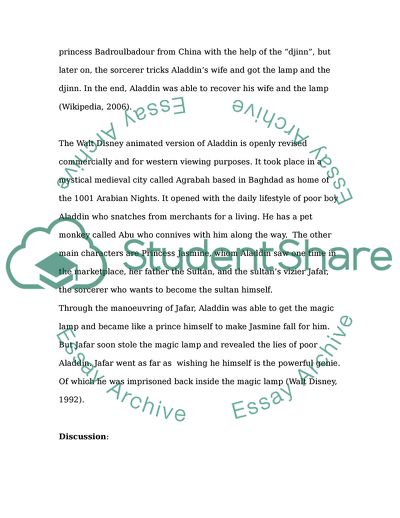Cite this document
(The Portrayal of Arabic Culture is Disney's Aladdin Term Paper, n.d.)
The Portrayal of Arabic Culture is Disney's Aladdin Term Paper. https://studentshare.org/social-science/1704782-discuss-the-portrayal-of-arabic-culture-is-disneys-aladdin
The Portrayal of Arabic Culture is Disney's Aladdin Term Paper. https://studentshare.org/social-science/1704782-discuss-the-portrayal-of-arabic-culture-is-disneys-aladdin
(The Portrayal of Arabic Culture Is Disney'S Aladdin Term Paper)
The Portrayal of Arabic Culture Is Disney'S Aladdin Term Paper. https://studentshare.org/social-science/1704782-discuss-the-portrayal-of-arabic-culture-is-disneys-aladdin.
The Portrayal of Arabic Culture Is Disney'S Aladdin Term Paper. https://studentshare.org/social-science/1704782-discuss-the-portrayal-of-arabic-culture-is-disneys-aladdin.
“The Portrayal of Arabic Culture Is Disney'S Aladdin Term Paper”. https://studentshare.org/social-science/1704782-discuss-the-portrayal-of-arabic-culture-is-disneys-aladdin.


